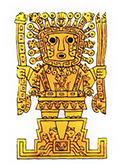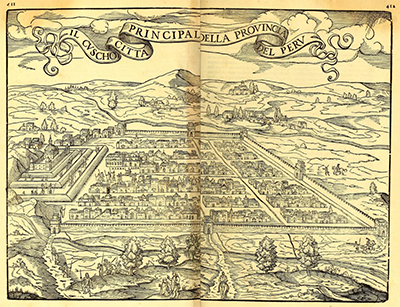The Inca: South American Empire
Part 2: Zenith and Downfall A council of nobles known as the panaqa advised the ruler. To rule such a far-flung empire, the ruler also depended on regional and local rulers. One of the main functions of the government administration was to facilitate the payment of taxes. The Inca civilization did not have a currency based in metal or paper; rather, Inca people paid tax in the form of the fruits of their labors, such as food, dyes, and textiles. Some people did pay tax in the form of precious metals, but it was in a lump form, not according to a scale of currency. Another way in which the people supported society was by paying a labor tax, agreeing to do work for the government (serving in the army or constructing roads, irrigation canals, crop terraces, fortresses, temples, and roads). Crime rates were low, mainly because punishments were so harsh. A convicted thief would often lose a limb as punishment. A person convicted of blaspheming against the gods could be put to death, legally. Inca beliefs included faith in huacas, or sacred areas, places, and objects. Many things were huacas: caves, rocks, mountains, waterfalls, and statues. Many people had a huaca statue in a special place in the home and both prayed to the statue and offered sacrifices to it. 
The Inca people had many gods. Their two major gods were Viracocha (right), who reigned supreme, and Inti, the Sun god. The people considered their rulers to be demigods, Inti's representatives on Earth. Inca rituals included mummifying the deceased rulers and storing them in a temple in Cuzco. Assisting the ruler-demigod in the managing of the religion were the High Priest, who lived in Cuzco, and a number of other priests, who manned the many temples dedicated to the many gods. Religious festivals, some of which involved human sacrifice, featured every month. A month in the Inca calendar contained three 10-day weeks. Other well-known gods and goddesses in the Inca pantheon were these:

The vast majority of those who lived within the Inca realm had one-room homes, made of adobe brick and covered with thatching. People slept on mats on the floor, and the homes had very little furniture. Children of the wealthy went to school and learned things that would help them succeed in the footsteps of their parents. Children of the not wealthy went to work at a very young age. The Inca achieved all of this success without such trappings of thriving civilizations as the wheel, draft animals, and iron or steel weaponry. Inca record-keeping took the form of the quipu, a detailed system of cords and knots that could record decimals up to 10,000 and served as the equivalent of a system of writing. It was under the leadership of Tupac's son Huayna (who reigned for several years on either side of the advent of the 16th Century) that the Inca Empire reached its greatest power. By that time, Spanish explorers and conquistadores had reached the Inca realm. As these invaders did with the Aztecs, they brought with them a handful of diseases that proved lethal to the Inca, who had no immunity to such things. Smallpox killed thousands of Inca, including Huayna himself, in 1525. 
The death of Huayna ignited a struggle for control, with two of his sons, Huascar and Atahualpa, claiming leadership. For several years, a civil war raged. Atahualpa emerged victorious, claiming victory in 1532. This was the same year in which the Spanish conquistador Francisco Pizarro arrived in Inca lands. The result was the conquest of the Inca. First page > Origins and Supremacy > Page 1, 2
|
|
Social Studies for Kids
copyright 2002–2025
David White




